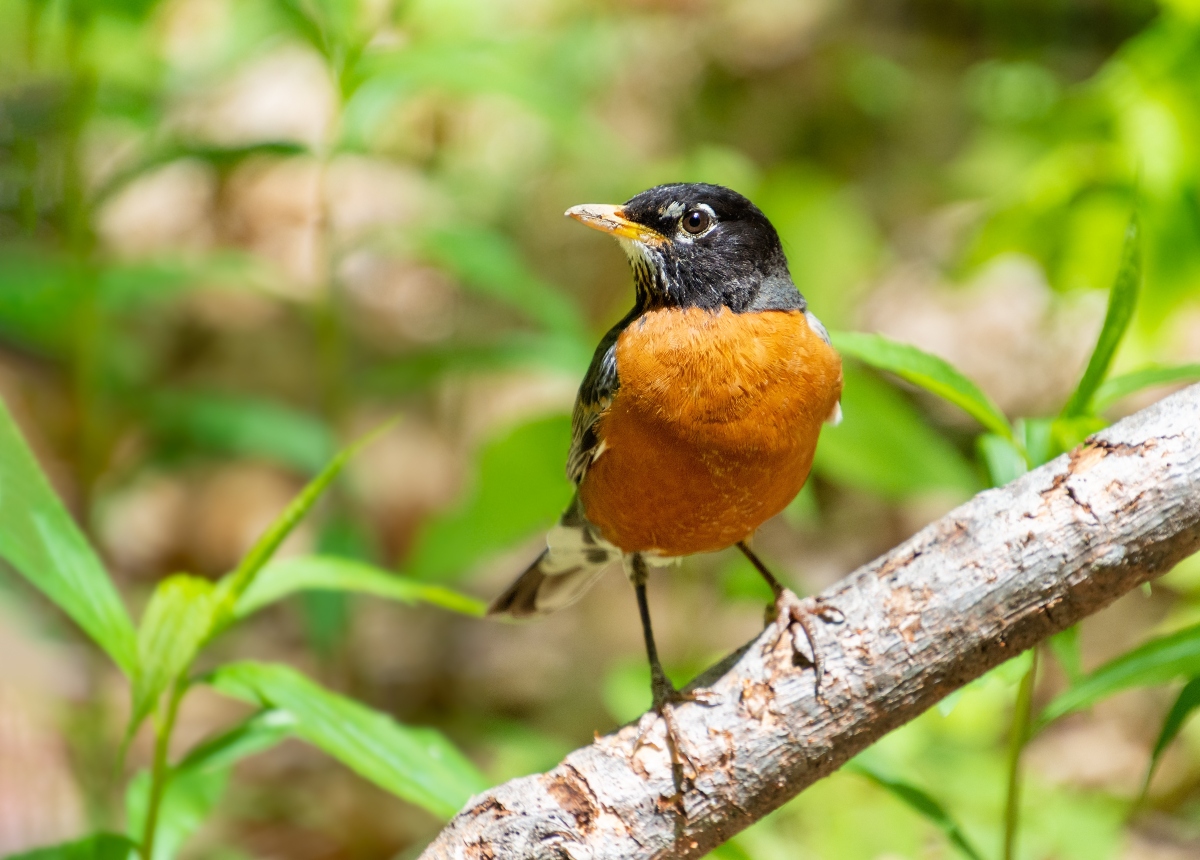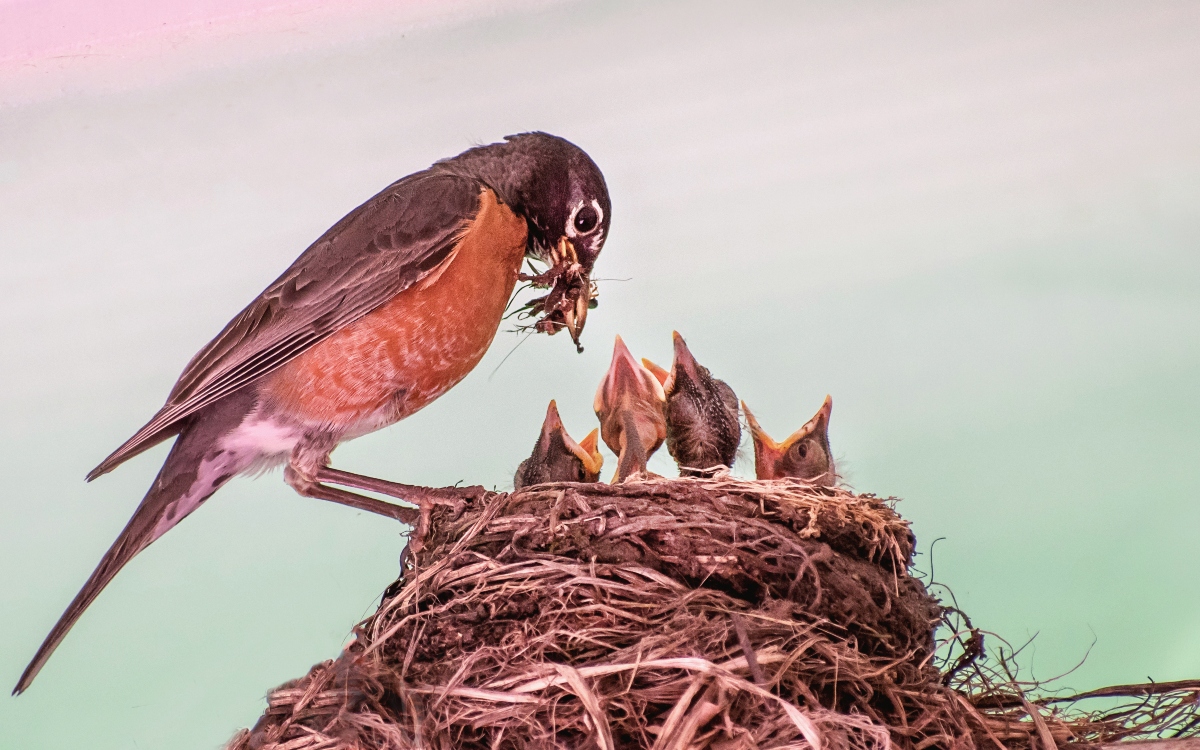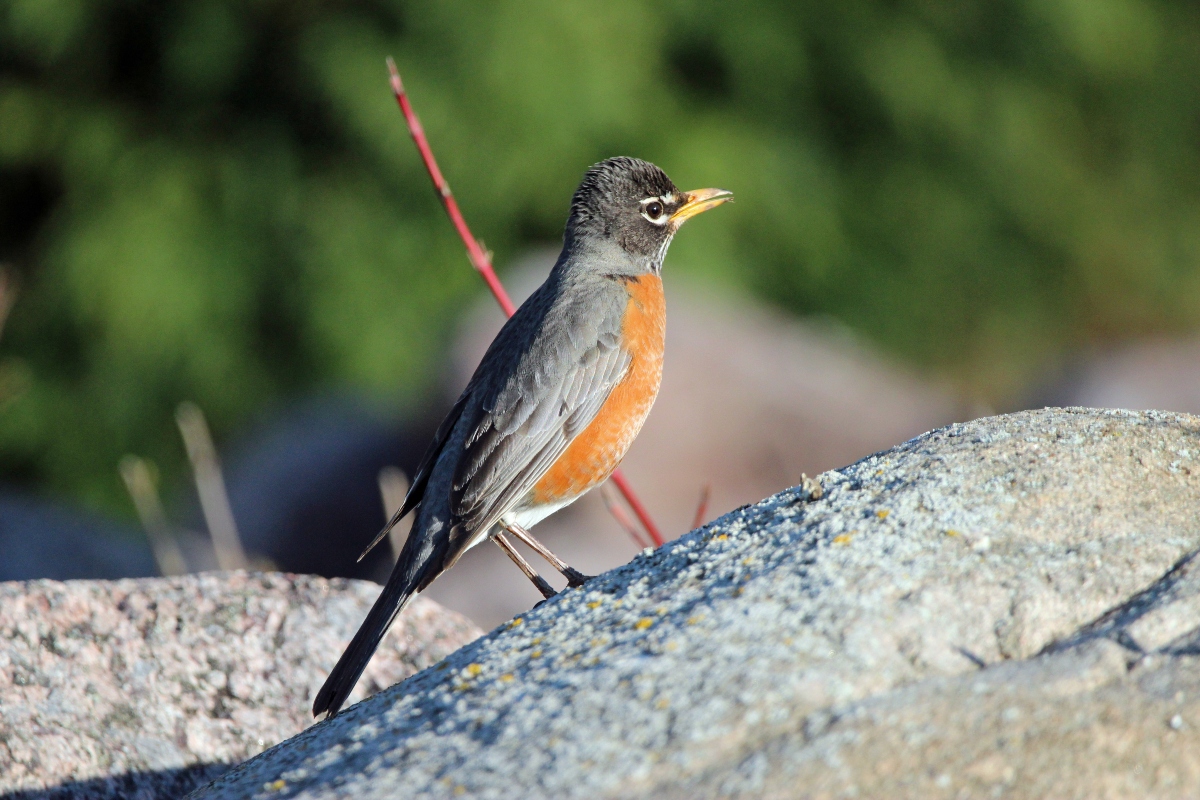In the panorama of North American avifauna, the American Robin stands as a prominent figure, often heralded as a messenger of spring. Scientifically named Turdus migratorius, this member of the Thrush family graces many landscapes, from forests and gardens to city parks.

The American Robin can be easily recognized by its distinctive appearance. Its robust body is clothed in a sleek coat of gray-brown feathers, contrasted sharply by its rich red or reddish-orange breast. This vibrant plumage, complemented by a pair of dark, keen eyes, grants the American Robin a visage that embodies both elegance and vitality.
Their geographical range is vast, spanning across North America from Alaska to Mexico. This extensive distribution is made possible due to their adaptive nature, which allows them to thrive in a variety of habitats including forests, grasslands, and urban areas.
A day in the life of an American Robin is marked by a series of melodious songs, often heard during the early hours of the morning. These songs, characterized by a series of clear, lilting phrases, bring a sense of serenity to the surroundings, marking the beginning of a new day.

As foragers, American Robins have a diverse diet that changes with the seasons. In the warmer months, they primarily feed on insects and earthworms, their keen sight helping them spot prey from a distance. As winter approaches, their diet shifts towards fruits and berries, a resourcefulness that ensures their survival during the harsher months.
The breeding season unveils another layer of their complex behaviors. During this time, males engage in courtship displays that include singing loud and clear songs to attract a mate. Once paired, they build nests, usually located in the crooks of trees or on building ledges, where the female lays a clutch of blue eggs, which she incubates diligently.
As parents, American Robins are attentive and nurturing. Both partners share the responsibility of feeding the chicks, a task that demands frequent foraging trips to gather food. Their dedication ensures the successful fledging of the next generation, ready to grace the skies with their vibrant presence.

From a conservation standpoint, American Robins are currently listed as a species of least concern, thanks to their adaptable nature and widespread distribution. However, like all wildlife, they are not immune to the challenges brought about by habitat loss and climate change.
Throughout cultures, the American Robin has been seen as a symbol of renewal and joy, a harbinger of the fresh start that spring brings. Their presence in literature, art, and folklore stands as testimony to their influence on human imagination and appreciation.
Witnessing the American Robin in its natural habitat, whether it’s hopping gracefully on the ground in search of food or serenading the dawn with its melodious songs, offers a glimpse into the vibrant and interconnected world of North American bird life. These delightful birds remind us of the simple joys and wonders that nature has to offer, inspiring us to cherish and protect the environment we share with them.